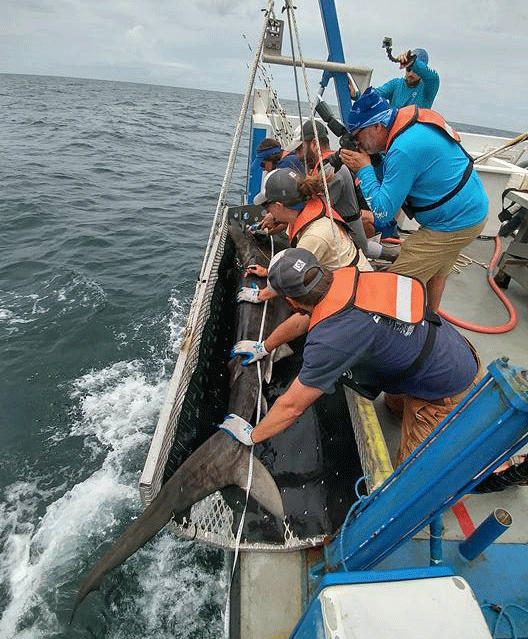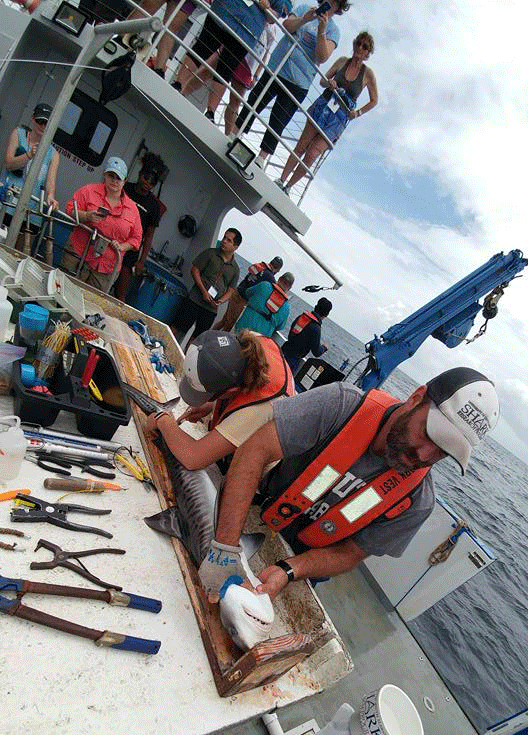
Globally, shark researchers work daily to change the stigma associated with the large apex predator. Dr. Marcus Drymon with the University of South Alabama and the Dauphin Island Sea Lab is a part of that global team.
His research team has tagged over ten thousand sharks across the northern Gulf of Mexico. Each shark is identified to species, measured, weighed, tagged, and released. Through this shark monitoring program, Dr. Drymon has encountered two dozen different species of sharks, and is unraveling the factors that influence their distributional patterns. His findings indicate the importance of temperature, salinity, dissolved oxygen, and the distribution of sharks’ preferred prey, in determining why sharks move to certain areas.
Using the latest technology, Dr. Drymon can track these sharks in near real-time. In late June, his team tagged a 10 foot male tiger shark with a SPOT tag for satellite tracking. Within a week of tagging, the tiger shark had moved from the mouth of Mobile Bay to the waters off Mississippi, and then back towards Florida. Understanding detailed movement patterns for large predators like tiger sharks is critical to ensuring they are adequately managed.
On board the R/V Alabama Discovery during that tagging were educators from Alabama, Arkansas, Mississippi, and Oklahoma. The group was part of the Fins, Fishes, and Fisheries teacher workshop hosted by Discovery Hall Programs at the Dauphin Island Sea Lab and sponsored by the Mississippi-Alabama Sea Grant Consortium.

"We learned so much from the experience," Jenni Zimlich, an ACCESS science educator in Alabama, said. "I was so intrigued at the compassion that these scientists took in their care of the sharks. They worked very quickly and assertively to get their information and release the sharks back into the Gulf. They were so nice in explaining what they were doing and why they were doing it."
"Most animals are not so dangerous unless they feel threatened," Jennifer Womack, a 4th grade science teacher from Gulfport, Mississippi, said. "They're reacting to the stress they're under, and not trying to hunt us down. They still have their preferred type of food."
As the teachers learned that day, there are times the preferred food is small birds. Feathers and bones were among the findings when Dr. Drymon demonstrated how scientists are able to learn about a shark's recent meal.
Moving into the classroom, Womack and Zimlich both plan to use what they learned on the boat to strengthen the knowledge of the shark with their students.
"I want to show them that there is such a diverse variety of shark species in the Gulf and that they depend on us to keep their habitat sustainable," Zimlich explained.
"I also took some pictures of the tools used aboard the vessel to share from the STEM aspect. Even if you're going to be a biologist, you're going to use aspects of engineering in your job. It's not just ocean, it's all science," Womack shared.
Watch the video below and see Dr. Drymon and his team tag the tiger shark. Also, click here for more on Dr. Drymon's research into the eating habits of tiger sharks.